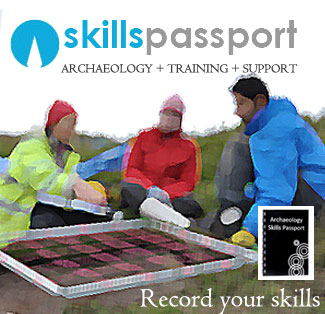Perhaps one of the most challenging of procedures on any archaeological site is the excavation of Human Remains. Cleaned, photographed, drawn, recorded and carefully lifted, the skeleton is now ready for specialist examination. Always check with a specialist osteologist the procedures required. use the guides at the end of the page to help understand the requirements.

PRINCIPLE: Understands skeletal anatomy, so can excavate without damage to bone and ensure nothing is lost or disturbed during lift.
- Novice – Is unsure about the procedure, but is able to assist under direct supervision in the act of excavation.
- Competent – Can take an active part in the excavation of the skeleton, under partial supervision and can excavate and clean, while also understanding the sequence of excavation and the basic anatomy of a skeleton.
- Proficient – Will be able to complete a full skeletal excavation with no damage to the material with no supervision, including photography, recording and storage.
Professional tips:
Wear nitrile gloves for your own protection.
Remember this was once a living human like you and show respect.
Metal tools can damage the bone, use brushes and wooden or plastic tools for delicate work
Leave hands, face and feet until the end, before excavating them.
Photograph in situ and at least plan the basic outline.
Don’t create situations where mixing skeletal material can happen (for example during washing)
Each hand and foot should be separated into individual bags and labelled right hand / left hand or right foot / left foot
Use proper skeleton boxes to transport and store human remains.
Learn your anatomy.
Always get a specialist involved from the start.
Digging up People: – Guidelines for Excavation and Processing of Human Skeletal Remains. Sue Anderson, © 1993.
Human Remains from Sites Under Development, a Basic Overview for Recovery Gaynor Western of Ossafreelance continues her guide to working with human remains and the legal implications and requirements for those involved. (Fully Revised).
Human Remains Excavation in the Field Gaynor Western of Ossafreelance explains the issues and methods of excavating and recording inhumated human remains during an excavation to maximise the potential information recovery.
Guidance for best practice for treatment of human remains excavated from Christian burial grounds in England’ is published jointly by English Heritage and the Church of England.

